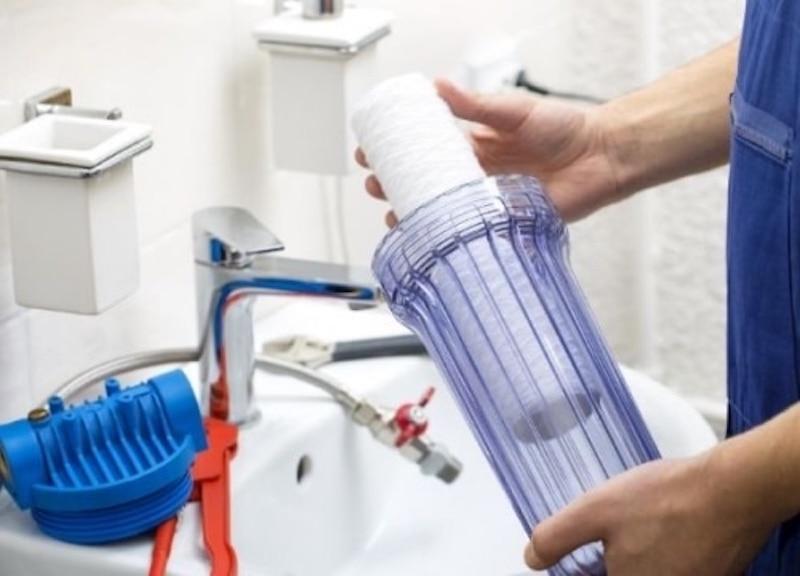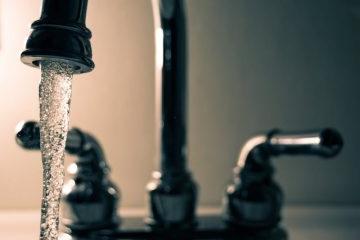Water Softener Maintenance 101

How did you ever live before buying a water softener for your home? The luxury of soft water can’t be matched. Home water treatment systems will run efficiently for many years if you take care of them. Keeping up on maintenance is a crucial step in protecting your investment and continuing to live in luxury.
The good news is that maintaining your system is simple. Every system is different and may have slightly different upkeep procedures. Be sure to consult with your water expert for the details of your specific system. But as a general rule, these are the simple steps to maintaining your system.
Adding Salt
Salt is the key component to getting deliciously soft water. Your water softener uses beads made of resin to attract mineral compounds, like calcium and magnesium, so they stay out of your drinking water. These beads need to be cleaned periodically to continue working. The process of cleaning your resin beads is the reason your system needs salt. The salt creates a brine solution that will flush your beads, remove the unwanted minerals from your system, and keep your water soft and fresh.
Every system and home is going to have a slightly different salt schedule. Staying on top of it and using the correct salt are the keys to keeping your system running at peak efficiency. Plan on replacing the salt in your system once a month. To make it easy, many water companies offer a convenient delivery service that ensures you have the right amount of salt on hand to keep the system on track.
Cleaning
Your water softener is integral to your home and should be on your regular household cleaning and maintenance schedule. Keeping it clean doesn’t take much and will help keep it running in tip-top shape. A well cared for system will save you headaches down the road, and your future self will thank you.
External Cleaning: You mostly want to focus on keeping the external components of your system clean. Using mild cleaners, keep it free from dust and debris. Every few months, give it a thorough wipe-down. Avoid abrasive cleaners like bleach. You also want to make sure nothing gets stored on top of your system. Avoid the temptation to stash any household items on top of your water softener.
Internal Cleaning: Every few years, you should schedule a service to have your water softener inspected and cleaned internally. Make sure you plan it when the system has a low salt supply. The professionals can come in and get your internal components squeaky clean.
Professional Cleaning: In addition to regular upkeep, there are a few instances when you want to ensure a professional cleans your system. It should be cleaned and sanitized after installation, when it sits idle for an extended period, and any time you receive an alert about unsafe drinking water in your local area. If your water ever develops a foul smell or taste, call your local water expert and have them take a look. The solution could be as simple as a thorough cleaning.
Problems to Watch For
Basic maintenance of your water softener really is that simple. Staying on top of it just takes a little attention every month. In addition to upkeep, watch for signs that something might be wrong with your system. A few common problems can develop but are easy to fix.
Salt Bridging: Too much salt in your system can form a salt bridge. When the water in the tank doesn’t reach the salt, it can harden in place and cause a bridge to form over the water. The bridge prevents the salt from dissolving in the water and forming a brine, making your softener ineffective. Watch for this when it’s time to add more salt, and if you notice a bridge forming, break it up and adjust your salt levels. If your water seems hard, but your salt tank is full, it’s possible you have a salt bridge.
Salt Mushing: Salt mushing is an issue with salt crystallization at the bottom of the tank. If the salt crystalizes, it creates mush at the bottom of the tank, forming a clog in the system. Mushing prevents salt brine from moving freely through the system to clean out the resin beads (making them ineffective). The only way to eliminate salt mushing is to clean your brine tank, break up the crystals, and start over with new salt. A professional can help with this big job.
Hard Water: If you begin to experience signs of hard water, call a professional out to assess your system. An expert can help you identify whether your system is malfunctioning or your family is exceeding the capacity of your system. If you have invested in a quality water softener, there is no reason you should be experiencing hard water. If you notice the signs, it’s time to call in some help.
Your system pretty much runs itself. It doesn’t need much, but if you experience any problems, it is always best to consult your local water company.
Infographic
Water softener is crucial for your home and should be part of your regular cleaning and maintenance routine. Keeping it clean and well-maintained will save you trouble in the future. Check out the infographic for three water softener maintenance tips.



